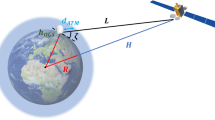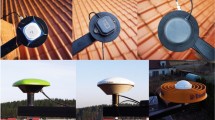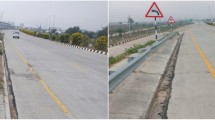Abstract
Rain attenuation caused by electromagnetic scattering and absorption is a major design parameter for setting up satellite communication systems operating at frequencies above 10 GHz. In this paper, a method for predicting rain attenuation in terrestrial point-to-point line of sight links at 97 GHz is proposed using previously available experimental data obtained in the south of UK over a period of more than a year. Rainfall rate and percentage of time are used as input data in the proposed prediction method. Results show that our prediction method based on artificial neural networks reveals very good agreement with the experimental data.
Résumé
L’affaiblissement par la pluie dû à la diffusion et à l’absorption des ondes électromagnétiques est un des paramètres principaux dans la conception de systèmes de radiocommunication terrestre fonctionnant à des fréquences supérieures à 10 GHz. Uarticle propose une méthode pour prédire Vaffaiblissement par la pluie sur une liaison point à point en visibilité directe à 97 GHz, en utilisant des résultats expérimentaux disponibles qui avaient été obtenus dans le Sud du Royaume-Uni pendant une durée de plus d’une année. L’intensité de pluie et le pourcentage de temps sont les données d’entrée pour la méthode de prévision proposée. Les résultats montrent que cette méthode, fondée sur des réseaux neuronaux, est en très bon accord avec les données expérimentales.
Similar content being viewed by others
References
Crane R.K., Prediction of Attenuation by Rain, IEEE Transactions on Communications, 28, no 9, pp. 1717–1733, 1980.
Khan S.A., Tawfik A.N., Vilar E., Gibbins C. J., 97 GHz Point to Point Line of Sight Radio Link Operating in an Urban Environment, IEE National Conference on Antennas and Propagation, pp. 275–278, April 1999.
Khan S.A., Tawfik A.N., Gibbins C.J., Gremont B.C.,, IEEE Transactions on Antennas and Propagation, 51, no 11, pp. 3109–3121, 2003.
International Telecommunication Union. Specific attenuation model for rain for use in prediction methods. Recommendation p. 838, ITU-R Recommendation, 1992.
Goddard J.W.F., Thurari M., Radar-Derived Path Reduction Factor for Terrestrial Systems, 10th International Conference on Antennas and Propagation, pp. 2.218–2.221, April 1997.
Hassoun M., Fundamentals of Artificial Neural Networks, MIT Press, Cambridge, 1995.
Dayhoff J.E., Neural Network Architectures: An Introduction, Van Nostrand Reinhold, New York, 1990.
Rumelhart D.E., McClelland J.L., Parallel Distributed Processing, MIT Press, Cambridge, 1986.
Haykin S., Neural Networks: A Comprehensive Foundation, Macmillan Publishing, New York, 1994.
Hornik K.M., Stinchcombe M., White H., Multilayer Feed Forward Networks are Universal Approximators, Neural Networks, 2, no 5, pp. 359–366, 1989.
Kohonen T., An Introduction to Neural Computing, Neural Networks, 1, pp. 3–16, 1988.
Wray J., Green G.R., Neural Networks, Approximation Theory and Finite Precision Computation, Neural Networks, 8, no 1, pp. 31–37, 1995.
Yang H.W., He C, Zhu H.W., Song W.T., Earth-Space Rain Attenuation Model Based on EPNet-Evolved Artificial Neural Network, IEICE Transactions on Communications, E84-B, no 9, pp. 2540–2549, 2001.
Yang H.W., He C, Zhu H.W., Song W.T., Prediction of Slant Path Rain Attenuation Based on Artificial Neural Networks, IEEE International Symposium on Circuits and Systems, Geneva, Switzerland, May 2000.
Yang H.W., He C, Song W.T., Zhu H.W., Using Artificial Neural Network Approach to Predict Rain Attenuation on Earth-Space Path, IEEE International Symposium on Antennas and Propagation, Salt Lake City, Utah, USA, July 2000.
Alencar G. A., Caloba L.P., Assis M.S., Artificial Neural Networks as Rain Attenuation Predictors in Earth-Space Paths, International Symposium on Circuits and Systems, Bangkok, Thailand, May 2003.
Alencar G. A., Caloba L.P., LOW Statistical Data Processing for Applications in Earth-Space Paths Rain Attenuation Prediction by an Artificial Neural Network, Asia-Pacific Radio Conference, Beijing, China, Aug. 2004.
Crane R.K., Propagation Phenomenon Affecting Satellite Communication Systems Operating in the Centimeter and Millimeter Wavelength Bands, Proceedings of IEEE, 5, pp. 173–188, 1971.
Crane R.K., Attenuation Due to Rain-A Mini-Review, IEEE Transactions on Antennas and Propagation, 23, no 5, pp. 750–752, 1975.
Laster J.D., Stutzman W.L., Frequency Scaling of Rain Attenuation for Satellite Communications Links, IEEE Transactions on Antennas and Propagation, 43, no 11, pp. 1207–1216, 1995.
Panagopoulos A.D., Kanellopoulos J.D., Differential Rain Attenuation Statistics on Two Coverging Point-to-Point Terrestrial Links Located in a Tropical Climatic Region, Annales des Télécommunications-Annals of Telecommunications, 58, no 3–4, pp. 673–677, 2003.
Capsalis C.N., Kanellopoulos J.D., Prediction Method for the Rain Attenuation Statistics Based on a Global Rainfall-Rate Distribution Model, Annales des Télécommunications-Annals of Telecommunications, 43, no 9-10, pp. 528–533, 1988.
Haque R., Chowdhury N., An Artificial Neural Network Based Transmission Loss Allocation for Bilateral Contracts., IEEE Canadian Conference on Electrical and Computer Engineering, Saskatoon, Canada, May 2005.
Develi I., Application of Multilayer Perceptron Networks to Laser Diode Nonlinearity Determination for Radio-over-Fibre Mobile Communications, Microwave and Optical Technology Letters, 42, no 5, pp. 425–427, 2004.
Develi I., Kalinli A., Ciftlikli C, Generalized Neural Method for Shaping the Exponential Chip Weighting Waveforms in Direct Sequence CDMA Systems, Frequenz, 60, no 3–4, pp. 24–28, 2006.
Ciftlikli C, Develi I., A Simple and Useful Approach for the Determination Process of the Weighted Despreading Sequences in a DS-CDMA System, European Transactions on Telecommunications, 14, no 4, pp.361–366, 2003.
Ciftlikli C, Develi I., On the Use of Neural Network-Based Determination of Weighted Despreading Sequences for a DS/CDMA System, Engineering Intelligent Systems for Electrical Engineering and Communications, 11, no 3, pp. 157–161, 2003.
Levenberg K., A Method for the Solution of Certain Non-Linear Problems in Least Squares, Quarterly Journal of Applied Mathematics, 2, no 2, pp. 164–168, 1944.
Marquardt D.W., An Algorithm for Least-Squares Estimation of Non-Linear Parameters, Journal of the Society of Industrial and Applied Mathematics, 11, pp. 431–441, 1963.
Osowski S., Siwek K., Markiewicz T., MLP and SVM Networks-A Comparative Study, Nordic Signal Processing Symposium, Espoo, Finland, June 2004.
Author information
Authors and Affiliations
Corresponding author
Rights and permissions
About this article
Cite this article
Develi, I. A method for predicting rain attenuation in terrestrial point-to-point line of sight links at 97 GHz. Ann. Telecommun. 62, 1035–1044 (2007). https://doi.org/10.1007/BF03253304
Received:
Accepted:
Issue Date:
DOI: https://doi.org/10.1007/BF03253304
Key words
- Electromagnetic wave propagation
- Rain
- Attenuation
- Millimetric wave
- Live of sight propagation
- Radiocommunication
- Forecast model
- Neural network.




